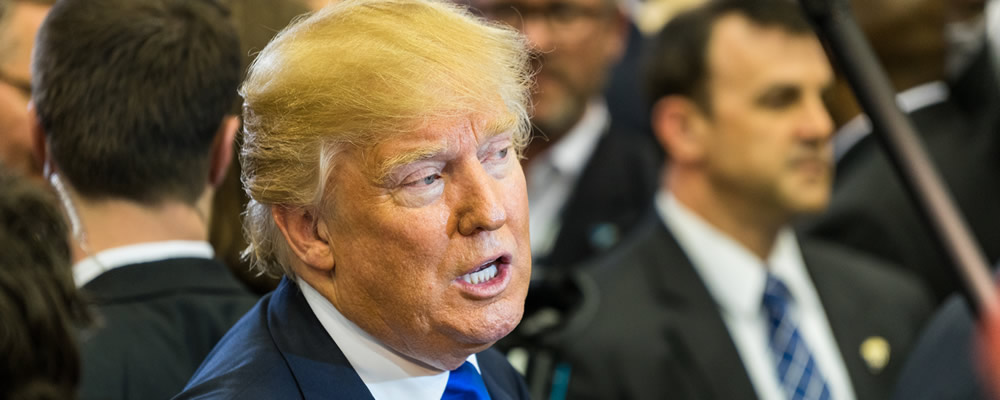Euro to US Dollar Exchange Rate Sheds Most of Last Week’s Gains on Trade Jitters
A lack of fresh support in the Euro (EUR) this week, as well as a fresh boost in demand for safe haven currencies like the US Dollar (USD), has knocked the Euro to US Dollar (EUR/USD) exchange rate lower.
Last week’s broad US Dollar selloff made it easier for EUR/USD to advance from the week’s opening level of 1.1691 to around 1.1754.
On Monday, EUR/USD even touched on a three-week-high of 1.1787 before beginning to fall again as US Dollar demand rose. At the time of writing on Wednesday, EUR/USD had shed most of last week’s gains and trended in the region of 1.1710.
On Tuesday night, demand for the US Dollar rose as US President Donald Trump announced plans for a fresh round of tariffs on Chinese goods, worsening market jitters about the reality of the US-China trade war and making the US Dollar more appealing.
Euro (EUR) Exchange Rates Struggle to Hold Ground on Signs of Trade Jitters Hitting Eurozone
While Monday’s German trade data was generally optimistic, Eurozone confidence data published over the last couple days has weighed on the Euro.
Investors had been hoping for more signs that Eurozone consumers and investors were weathering the uncertainties of a US-China trade war, but the latest data has come in even lower than expected.
Tuesday saw the publication of ZEW’s German and Eurozone economic sentiment index stats from July, which were highly disappointing.
Germany’s current conditions print fell from 80.6 to 72.4, while the economic sentiment index plunged from -16.1 to -24.7. The Eurozone figure was similarly disappointing, slumping from -12.6 to -18.7.
The primary reason for the surprise fall in every print was the uncertainty surrounding US trade protectionism, and rising fears that the Eurozone economy could be negative impacted too.
US Dollar (USD) Exchange Rates Benefit from Safe Haven Demand
The US Dollar’s poor performance last week and on Monday was due to a brief boost in risk-sentiment. Investors sold the US Dollar from its highs on disappointing US wage data and bought riskier currencies up from their cheapest levels.
However, this movement was stopped short on Tuesday night following the latest escalation in the US-China trade war.
US President Donald Trump announced a 10% tariff on around $200b of Chinese goods, on top of previous tariffs that went into effect last week.
China quickly criticised the tariffs and indicated that a countermeasure was likely, worsening market concerns that the trade war would only continue to escalate.
According to Pauline Loong, Managing Director at Asia-Analytica in Hong Kong, it’s already too late for either nation to back down:
‘It’s already past the point of no return,
What’s next is not so much a trade war or even a cold war as the dawn of an ice age in relations between China and the United States.’
As the US Dollar is a safe haven currency that benefits from times of market uncertainties, it climbed against the Euro. However, investors remain anxious about the trade war’s potential impact on the US economy which has limited EUR/USD losses.
Euro to US Dollar (EUR/USD) Forecast: Key Inflation Figures in Focus
Thursday could be an influential session for the Euro to US Dollar (EUR/USD) exchange rate, especially if upcoming Consumer Price Index (CPI) results surprise investors in some way.
In terms of data, Thursday’s session is the one most likely to move EUR/USD this week. Germany’s final inflation results from June will be followed by France’s, and then the US inflation rate from June during the American session.
German inflation is currently projected to have slowed from 0.5% to 0.1% month-on-month in June, and from 2.2% to 2.1% year-on-year.
If the data beats forecasts, investors may become more bullish about Eurozone price pressures and this could even influence European Central Bank (ECB) speculation.
As for US inflation, the US figures are expected to show slight improvements in the year-on-year prints.
Following last week’s disappointing US wage inflation figures, investors would be relieved if US inflation meets or beats forecasts.
Conversely, a surprisingly slow US inflation rate would worsen US price pressure concerns, weigh further on Federal Reserve interest rate hike bets and make it easier for the Euro to US Dollar (EUR/USD) exchange rate to advance towards the end of the week.
